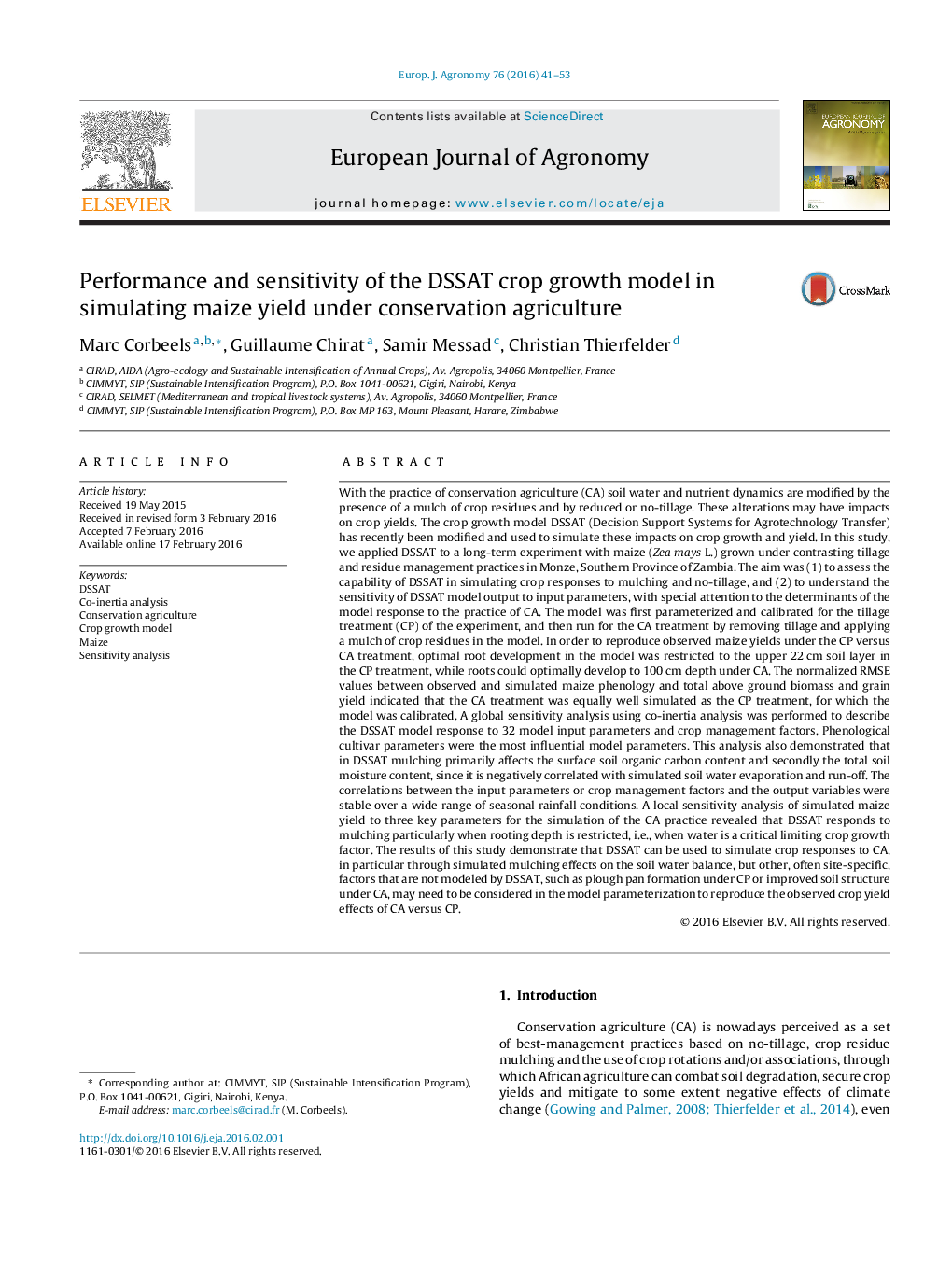| Article ID | Journal | Published Year | Pages | File Type |
|---|---|---|---|---|
| 6374250 | European Journal of Agronomy | 2016 | 13 Pages |
â¢DSSAT can be used to simulate crop responses to the practice of crop residue mulching.â¢Simulated mulching effects on crop yield occur through the modified soil water balance.â¢Soil structural effects of CA are not explicitly simulated with DSSAT.â¢Co-inertia analysis is powerful for visualizing relationships between model input and output.
With the practice of conservation agriculture (CA) soil water and nutrient dynamics are modified by the presence of a mulch of crop residues and by reduced or no-tillage. These alterations may have impacts on crop yields. The crop growth model DSSAT (Decision Support Systems for Agrotechnology Transfer) has recently been modified and used to simulate these impacts on crop growth and yield. In this study, we applied DSSAT to a long-term experiment with maize (Zea mays L.) grown under contrasting tillage and residue management practices in Monze, Southern Province of Zambia. The aim was (1) to assess the capability of DSSAT in simulating crop responses to mulching and no-tillage, and (2) to understand the sensitivity of DSSAT model output to input parameters, with special attention to the determinants of the model response to the practice of CA. The model was first parameterized and calibrated for the tillage treatment (CP) of the experiment, and then run for the CA treatment by removing tillage and applying a mulch of crop residues in the model. In order to reproduce observed maize yields under the CP versus CA treatment, optimal root development in the model was restricted to the upper 22Â cm soil layer in the CP treatment, while roots could optimally develop to 100 cm depth under CA. The normalized RMSE values between observed and simulated maize phenology and total above ground biomass and grain yield indicated that the CA treatment was equally well simulated as the CP treatment, for which the model was calibrated. A global sensitivity analysis using co-inertia analysis was performed to describe the DSSAT model response to 32 model input parameters and crop management factors. Phenological cultivar parameters were the most influential model parameters. This analysis also demonstrated that in DSSAT mulching primarily affects the surface soil organic carbon content and secondly the total soil moisture content, since it is negatively correlated with simulated soil water evaporation and run-off. The correlations between the input parameters or crop management factors and the output variables were stable over a wide range of seasonal rainfall conditions. A local sensitivity analysis of simulated maize yield to three key parameters for the simulation of the CA practice revealed that DSSAT responds to mulching particularly when rooting depth is restricted, i.e., when water is a critical limiting crop growth factor. The results of this study demonstrate that DSSAT can be used to simulate crop responses to CA, in particular through simulated mulching effects on the soil water balance, but other, often site-specific, factors that are not modeled by DSSAT, such as plough pan formation under CP or improved soil structure under CA, may need to be considered in the model parameterization to reproduce the observed crop yield effects of CA versus CP.
